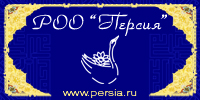 Summary
Summary
«Mongolia», a picture story by Svetlana Sysoeva, opens this issue as our «Impression» section.
Further we publish the following articles:
Vladimir Bondarenko. The Mystery of Three Hares. The image of three hares chasing one another in a circle can be found in medieval temples of England and Germany, on the tombstones of the Jewish cemetery in Ukraine, in Iran and China. The author ponders over the symbolic meaning of this motif and the reasons for its widespread expansion.
Vladimir Belyakov. Material Evidence. Egypt is striving for the return of at least five most important artifacts, which had been illegally taken out of the country at different times. So far there are no visible evidence that this struggle is going to be successful.
Larisa Kelim. Medial Way of Jain Ascetics. The author had a chance to spend some time in the Jain women’s monastic community in India. The observation of this conservative and isolated community shows that it gradually becomes more open to the world.
Sparkles of Divine Light. Such is the title for a collection of materials devoted to the 230th anniversary of Hasidic printing, which became the subject of the book exhibition in the Oriental Centre of the Russian State Library. Konstantin Burmistrov in his article «The Hasids and their Books» considers the origins and history of Hasidism, and the development of Hasidic printing on the territory of Russia.
Mikhail Tsyganov. A Cup of Java. According to the author, almost all coffee trees on Earth, which nowadays grow on the plantations with the total area of 5 million hectares, originate from several seedlings that have been sent from Java to Amsterdam in the middle of the 17th century. This statement is supported by the vast documentary evidence.
Vladimir Datsyshen. Pearl Tea for the Empress. An intriguing story of Russian officials in China who searched the rare kind of tea, which became dear to the taste of Maria Aleksandrovna, spouse of Emperor Aleksandr II.
Aleksandr Mescheryakov. Rough Force and Soft Force. Among the reforms, which were sanctified by the authority of Emperor Meiji, was the «Europeanisation» of the physical characteristics of the Japanese through sport. The way to victories in sport was unthinkable without fostering the «soft force», the strength of mind.
Konstantin Pistsov. The Costume for Court Eunuch. Eunuchs had played an important role in the retinue of Ming Emperors. The evolution of their garments reflects the soaring career of this specific group of courtiers.
Yana Chekhanovets. Armenian Masters of Ceramics in Jerusalem. The works of several Armenian masters, who had settled in Jerusalem after World War I, gave birth to a distinctive artistic school, which to a great extent determined the architectural look of the city. Most important artistic accomplishments of this school are related to the works of David Oganesyan.
Alla Shustova. Yuriy Roerich in Sikkim. Yuriy Roerich’s monograph «Tibetan Painting» (1925) immediately established the 23-year old author as one of the leading Tibetologists of the 20th century. This work, which did not lose its importance up till now, was created with the help of the collection of Tibetan paintings, which the Roerichs’ family started collecting while living in Sikkim.
Ol’ga Pavlova. The Child’s Very First Home. The subject of this article is the baby cradle among the peoples of Caucasus. The whole stratum of household culture is related to the specific features of its construction and manufacturing, and to the rituals that had absorbed both pagan and Islamic elements.
Andrey Shugaev. Postcards from Distant Countries. The «Golden Age» of postcards is the period of the late 19th — early 20th century. The people got acquainted with the life of exotic countries largely because of postcards. The author of this article, a well-known deltiologist, presents a division of his collection devoted to the crafts of the peoples of North Africa.
Nikita Sokolov. Maharaja of the Game. Maharaja Mummadi of the Wodeyar dynasty had quite a few talents, but probably the most principal of them was the invention and dissemination of all kinds of table games.
Mikhail Vol’pe. To Drink a Cup of Tej, to Eat a Piece of Injera… «To my mind, Ethiopian cuisine is a bit spicy. But it seems that eighty million Ethiopians do not share this opinion, as for them the more chili in any dish, the better." Such is the start of the author’s fascinating story about culinary fancies of the Ethiopians.
The issue also features the photo essay about the Style and Taste of Korea 2011 Festival, and about the opening of the «Oriental Collection» Club in the Biblioglobus book shop in Moscow.
Our traditional «Orientnet» section is devoted to mythological animals in the cultures of the people of Orient.
Please e-mail your wishes, suggestions and comments to the following address: orientnet@rsl.ru.
You can find the summaries of the previous issues online, by visiting our section of the Russian State Library Web-site: http://orient.rsl.ru.






